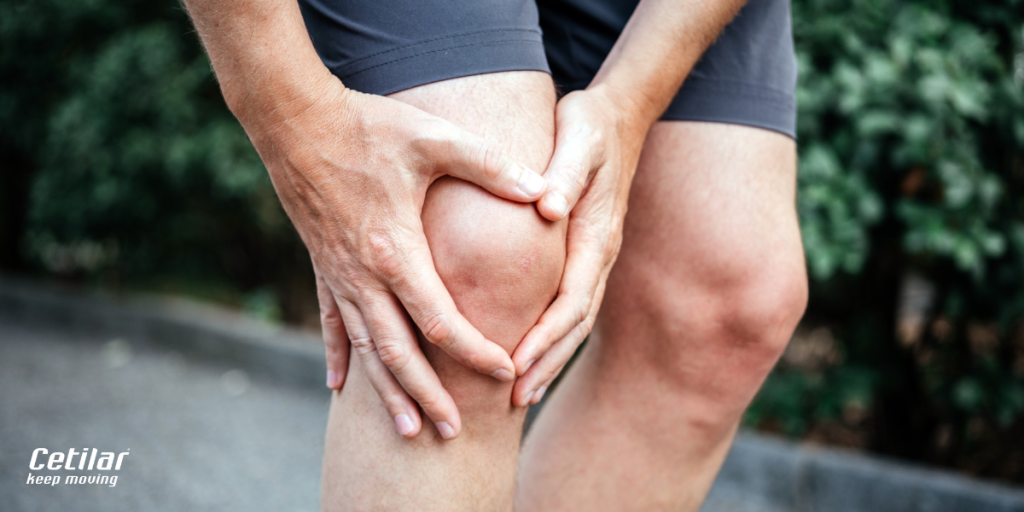Meniscus and cartilage wear: causes, treatments and useful exercises

Meniscus and cartilage wear are common issues, particularly as we age or due to repetitive injuries.
These structures are vital for the proper function of our joints, especially the knee, which bears much of the body’s weight.
In this article, we will explore the anatomy of the meniscus and cartilage, the causes of their wear, and the available treatments and exercises to help manage and recover joint function.
Anatomy of the meniscus and articular cartilage
Meniscus: a fundamental structure
The meniscus is a fibrocartilaginous structure within the knee joint, with two menisci in each knee: the medial meniscus (inner) and the lateral meniscus (outer). These crescent-shaped tissues serve as shock absorbers, evenly distributing body weight and reducing friction between the femur and tibia.
The menisci also contribute to knee stability and help to lubricate the joint.
Articular cartilage: protection and smooth movement
Articular cartilage is a strong, elastic connective tissue that covers the ends of bones in synovial joints like the knee, hip, and shoulder. Its primary function is to absorb shock and reduce friction during movement.
The cartilage is avascular (lacking blood vessels), which means it has a very limited ability to repair itself, making wear and tear a serious problem.
Causes of meniscus and cartilage wear
Ageing
As we age, the meniscus and joint cartilage naturally undergo a process of degeneration. The decrease in hydration and elasticity over time makes these tissues more fragile and vulnerable to damage, even from everyday movements.
Repeated trauma and micro-trauma
Acute injuries, like a sudden twist or rotation of the knee, can lead to meniscal lesions. Repeated micro-trauma, often seen in sports such as football or tennis, can gradually wear down the cartilage.
Overweight and obesity
Carrying excess body weight increases the load on joints, accelerating the wear and tear. This is also true for individuals who engage in work or sports activities that involve heavy lifting or repetitive motions.
Anatomical malformations and genetic factors
Some people may have a genetic predisposition that makes them more prone to developing meniscal or cartilage wear. Anatomical malformations, such as varus (inward) or valgus (outward) knee alignment, can also lead to improper distribution of weight across the joint.
Treatments for meniscus and cartilage wear
Conservative treatments
The first approach to managing cartilage and meniscus wear is conservative treatment. This includes rest, ice application to reduce inflammation and the use of non-steroidal anti-inflammatory drugs (NSAIDs):
Physiotherapy
Physiotherapy plays a crucial role in improving joint function and reducing pain. Through targeted exercises, it can help strengthen the surrounding muscles, improving mobility and reducing the load on the affected area.
Intra-articular infiltrations
In certain cases, intra-articular infiltrations with substances like hyaluronic acid or corticosteroids may be used to provide temporary relief and improve joint mobility.
Surgical treatments
When conservative therapies are not enough to manage meniscus or cartilage wear, surgical options may be considered. Partial meniscectomy or meniscal repair are options for severe meniscal injuries.
For cartilage damage, more advanced surgical options are available, including cartilage transplantation or microfracture surgery to stimulate regeneration.
Meniscus wear: useful exercises to prevent and manage it
Muscle strengthening
Strengthening the muscles that support the knee joint, such as the quadriceps and hamstrings, is crucial for reducing the direct load on the joint.
Exercises like leg presses, modified squats and knee extensions with elastic bands can be extremely useful.
Proprioception and stability
Proprioceptive exercises are designed to improve balance and joint stability. Using unstable boards or proprioceptive cushions helps stimulate neuromuscular coordination, reducing the risk of injury.
Stretching and mobilisation
Maintaining good flexibility in the muscles and joints is essential to prevent stiffness and restricted movement. Regular stretching of the hamstrings and calf muscles, as well as gentle joint mobilisations are recommended.
Low impact activities
Activities like swimming, cycling and yoga are ideal for keeping the knee joint active without overloading it. These exercises promote the circulation of synovial fluid, which nourishes the cartilage.
Conclusions
Meniscus and cartilage wear is a condition that can significantly affect quality of life. However, with appropriate management, it is possible to alleviate symptoms and maintain good joint function.
Prevention through regular physical activity and a healthy lifestyle is crucial in protecting the joints and reducing the risk of meniscus and cartilage wear. For those who are already experiencing symptoms, a combination of conservative therapies, targeted exercises, and, if necessary, surgical treatments can lead to significant improvements in function and pain relief. The first step in managing the condition is to consult a specialist in physiotherapy or sports medicine.
ALESSIO ERRA
Sports and orthopaedic physiotherapist
Born in 1988, he earned a degree in physiotherapy from the University of Pisa in 2010, followed by a master’s in clinical posturology and advanced training in various specialities. His extensive experience in professional sports, particularly in motorsport, has driven him to specialise in sports and orthopaedic physiotherapy, manual therapy for musculoskeletal and visceral conditions, posturology and injury prevention techniques for athletes.
His primary focus areas include the treatment of chronic joint pain, rehabilitation following sports injuries or surgery, and implementing injury prevention strategies for both professional and amateur athletes.